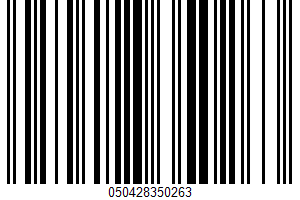Gingerbread House - 220 calories
Manufacturer Cvs Pharmacy, Inc.
Product Information and Ingredients
Gingerbread House is manufactured by Cvs Pharmacy, Inc. with a suggested serving size of 1 HOUSE (50 g) and 220 calories per serving. The nutritional value of a suggested serving of gingerbread house includes 0 mg of cholesterol, 0 mg of sodium, 41 grams of carbohydrates, 0 grams of dietary fiber, 22 grams of sugar and 2 grams of proteins.
The product's manufacturer code is UPC: 050428350263.
This product is high in sugars.
Calories from fat: a total of 20.45% of the calories in the suggested servig of this product come from fat.
Sugars 44% of DV
A serving of 1 HOUSE (50 g) of gingerbread house has 44% of the recommended daily intake of sugars.
Ingredient List
- Wheat Flour
- Sugar
- Margarine (palm Oil
- Bht)
- High Maltose Syrup
- Brown Sugar
- Water
- Flavorings
- Ammonium Hydrogen Carbonate
- Sodium Bicarbonate
- Salt
- Gelatin
- Titanium Dioxide
- Fd&c Colors (red #40
- Yellow #5
- Yellow #6
- Blue #1
- Red #3)

Nutrition Facts
Serving Size 1 HOUSE (50 g)
| Amount Per Serving | ||
|---|---|---|
| Calories 220 | Calories from Fat 45 | |
| % Daily Value* | ||
| Total Fat 5g | 4% | |
| Saturated Fat 3g | 8% | |
| Trans Fat 0g | ||
| Cholesterol 0mg | 0% | |
| Sodium 0mg | 0% | |
| Total Carbohydrate 41g | 7% | |
| Dietary Fiber 0g | 0% | |
| Sugars 22g | ||
| Protein 2g | ||
| Vitamin A 0% | Vitamin C 0% |
| Calcium 0% | Iron 0% |
* Percent Daily Values are based on a 2,000 calorie diet.
Nutrition Facts
Serving Size 100g (about 3.52 oz)
| Amount Per Serving | ||
|---|---|---|
| Calories 440 | Calories from Fat 90 | |
| % Daily Value* | ||
| Total Fat 10g | 8% | |
| Saturated Fat 6g | 15% | |
| Trans Fat 0g | ||
| Cholesterol 0mg | 0% | |
| Sodium 44mg | 1% | |
| Total Carbohydrate 82g | 14% | |
| Dietary Fiber 0g | 0% | |
| Sugars 44g | ||
| Protein 4g | ||
| Vitamin A 0% | Vitamin C 0% |
| Calcium 0% | Iron 0% |
* Percent Daily Values are based on a 2,000 calorie diet.
Gingerbread House Nutritional Value
| Nutrient | Suggested Serving 1 HOUSE (50 g) | Standard Serving 100g |
|---|---|---|
| Energy | 220 kcal (6%) | 440 kcal (11%) |
| Protein | 2 g (2%) | 4 g (4%) |
| Total Lipid (fat) | 5 g (4%) | 10 g (8%) |
| Carbohydrate, By Difference | 41 g (7%) | 82 g (14%) |
| Fiber, Total Dietary | 0 g (0%) | 0 g (0%) |
| Sugars, Total | 22 g (44%) | 44 g (88%) |
| Calcium, Ca | 0 mg (0%) | 0 mg (0%) |
| Iron, Fe | 0 mg (0%) | 0 mg (0%) |
| Sodium, Na | 22 mg (0%) | 44 mg (1%) |
| Vitamin C, Total Ascorbic Acid | 0 mg (0%) | 0 mg (0%) |
| Vitamin A, Iu | 0 IU (0%) | 0 IU (0%) |
| Fatty Acids, Total Saturated | 3 g (8%) | 6 g (15%) |
| Fatty Acids, Total Trans | 0 g (0%) | 0 g (0%) |
| Cholesterol | 0 mg (0%) | 0 mg (0%) |
Calories Burn off Time
How long would it take to burn off Cvs Pharmacy, Inc. Gingerbread House with 220 calories? A brisk walk for 48 minutes, jogging for 22 minutes, or hiking for 37 minutes will help your burn off the calories in gingerbread house.
Burn off time varies based on your weight, physical activity and exercise intensity. The following physical activity table contains an estimated burn off time for a person weighting 154 lbs.
| Physical Activity | Burn Off Time |
|---|---|
| Bicycling - 10 mph or less | 46 minutes |
| Dancing | 40 minutes |
| Golfing | 40 minutes |
| Hiking | 37 minutes |
| Light Gardening | 40 minutes |
| Stretching | 73 minutes |
| Walking - 3.5 mph | 48 minutes |
| Weight Training - light workout | 61 minutes |
| Aerobics | 28 minutes |
| Basketball | 30 minutes |
| Bicycling - 10 mph or more | 22 minutes |
| Running - 5 mph | 22 minutes |
| Swimming | 26 minutes |
| Walking - 4.5 mph | 29 minutes |
| Weight Training - vigorous workout | 30 minutes |
Footnotes
Percent daily values are based on a 2,000 calorie reference diet. Factors like age, gender and level of physical activity may affect your daily required values.
The editorial opinions regarding food value or quality in this website are given without warranty, and are not intended to replace medical advice or a nutritionist guidance.
Dietary Recommendations
A healthy eating pattern that accounts for all foods and beverages within an appropriate calorie level could help achieve and maintain a healthy weight and reduce the risk of chronic disease. Healthy eating habits include the following:
- Vegetables from all subgroups, including dark, green, red and orange vegetables and also beans and peas
- A variety of whole fruits
- Grains with at least half of which are whole grains
- Low or fat free dairy products, including milk, yogurt, cheese and/or fortified soy beverages
- Protein foods, including seafood, lean meats and poultry, eggs and nuts
- Oils with limited amounts of saturated fats and trans fats, added sugars, and sodium
